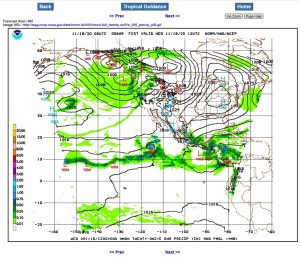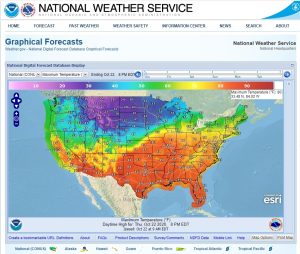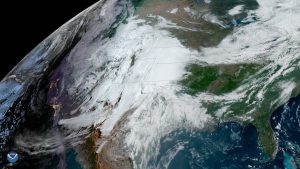By Megan Bailey
Prepare your family for the unpredictability of spring weather with our weather-ready tips. From creating emergency plans to staying informed about thunderstorms and tornadoes, learn how to stay safe this season.
As the chill of winter fades away, spring emerges with its promise of warmth and renewal. However, along with blooming flowers and longer days, spring also brings its share of unpredictable weather. From thunderstorms to tornadoes, spring weather events can pose risks to you and your family if you’re not adequately prepared. To ensure your safety and peace of mind, it’s essential to get weather ready for the season ahead. Here are some essential tips to help you navigate through spring’s weather challenges.
What weather events might I encounter in the spring?
Lightning and Thunderstorms. Each year in the U.S., thunderstorms produce 20-25 million lightning flashes that strike the ground, killing an average of 20+ people and injuring hundreds more – often in devastating and permanent ways. If you hear thunder, seek shelter indoors immediately and avoid electrical appliances and plumbing fixtures. Stay indoors for at least 30 minutes after the last clap of thunder. If you’re caught outdoors, avoid open fields, tall trees, and bodies of water.
Rip Currents. Rip currents kill over 100 beachgoers in the U.S. each year. At the beach, remaining vigilant and knowing when to speak up can save someone’s life. Swim only in designated areas with lifeguards present, and always appreciate the power of rip currents. If you enter a rip current, swim along the shoreline until you are free from the pull, then angle away from the current toward the shore (National Weather Service). Teach children how to swim and supervise them closely at all times.
Heat. As temperatures rise, take precautions to prevent heat-related illnesses such as heat exhaustion and heatstroke. Heat can be a deadly weather hazard, even outside of heat waves. Stay hydrated, wear lightweight and light-colored clothing, and avoid strenuous outdoor activities during the hottest part of the day. Don’t forget to rest and put on sunscreen regularly.
Tornadoes. Tornadoes can happen at any time of day and can form in mere minutes. Have a designated safe space in your home where your family can take shelter during a tornado, such as a basement or an interior room on the lowest floor. Practice tornado drills regularly and familiarize yourself with the signs of an approaching tornado, including dark clouds and a roaring sound.
Floods. Be aware of flood risks in your area and have a plan in place to evacuate if necessary. Avoid driving or walking through flooded areas, as even shallow water can pose a significant danger. More than 50% of all flood fatalities are vehicle related (National Weather Service). Monitor local water levels and heed evacuation orders from authorities.
What can I do to prepare?
Once you determine what type of weather events could occur in your area, it is then important to start prepping for them. By following these steps, your family will be prepared for last-minute announcements and weather changes.
Stay Informed. Keep a close eye on weather forecasts and alerts from reliable sources such as the National Weather Service or trusted weather apps. There are many ways to get information, including local TV and radio stations, wireless emergency alerts, and NOAA weather radio. Make sure you have a way to access critical information without the internet and cellular service, as those communication lines may be compromised.
Create a Family Emergency Plan. Develop a comprehensive emergency plan with your family that includes evacuation routes, designated meeting points, and important contact information. Practice drills regularly to ensure everyone knows what to do in an emergency.
Build an Emergency Kit. Stock up on essential supplies for your home and car, including non-perishable food, water, flashlights, batteries, a first-aid kit, and any necessary medications. Don’t forget to include items specific to spring weather hazards, such as rain gear and sturdy shoes.
Protect Your Home. Take steps to safeguard your home against potential damage from spring storms. Trim trees and branches near your house, secure outdoor furniture and decorations, and reinforce windows and doors if necessary. Consider installing a sump pump or flood barriers if you live in a flood-prone area.
Taking proactive steps to prepare for spring weather events can help keep yourself and your family safe from harm. Remember, it’s better to be over-prepared than caught off guard when severe weather strikes. Stay informed, stay vigilant, and stay safe this spring season!












